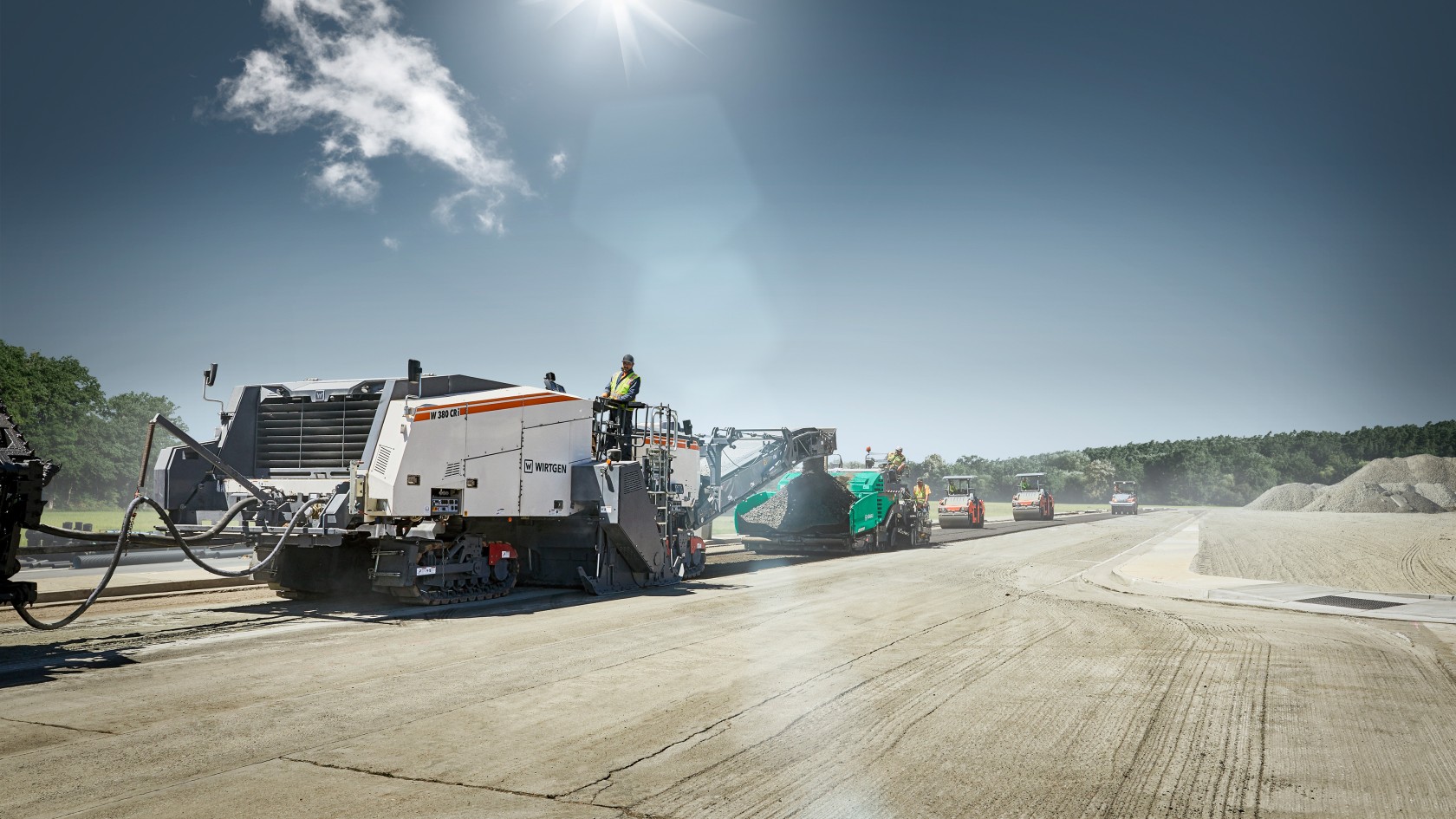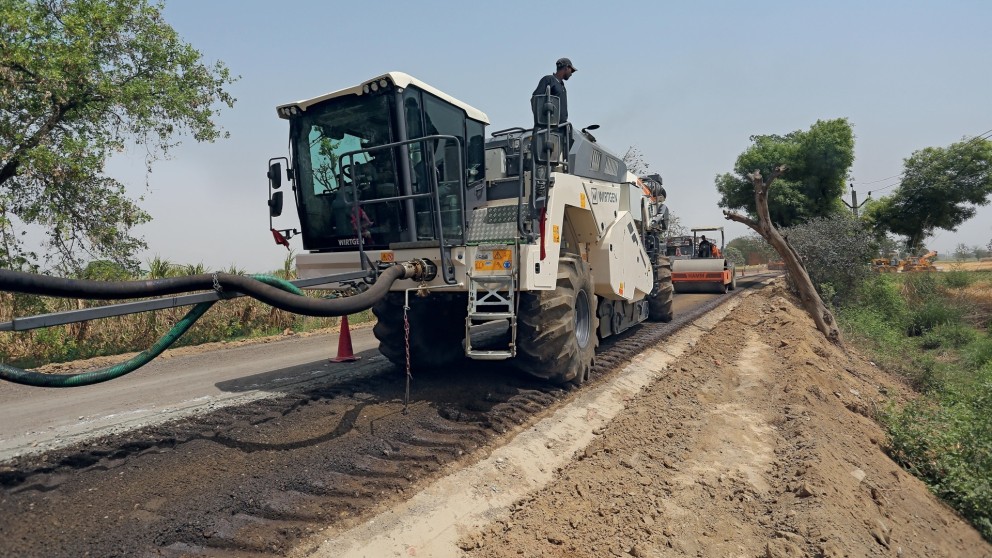In-Situ Cold Recycling


Once the bearing capacity of the asphalt surface layer has been compromised, the road structure must be completely rehabilitated. The trend is currently moving towards environmentally friendly and cost-effective solutions that involve recycling the damaged road surface.
During the cold in-place (or in-situ) recycling process, the reclaimed material does not leave the construction site at all, but is processed on the spot and reused immediately. This not only eliminates the need for trucks to make frequent trips to the processing station, but also reduces construction times.
“Environmentally friendly technologies are in demand. WIRTGEN’s cold recycling process has proven itself in the field for years and already meets tomorrow’s requirements today.”
WIRTGEN Cold recyclersAs a pioneer in cold recycling, WIRTGEN offers different technologies and processes that can be used in accordance with the conditions on-site. The basic technology is the same for all cold recyclers, however: Small amounts of cement are spread out ahead, the asphalt layer is granulated to the desired depth, the granulate is mixed with the binding agent and water as well as bitumen emulsion or foamed bitumen, then repaved and compacted.
When using cold recyclers from WIRTGEN’s CR series, an asphalt paver is usually also used. The homogeneous material prepared by the cold recycler is transferred directly to the asphalt paver’s material hopper, where it is paved and pre-compacted.
With the WR series of cold recyclers, an additional paver is not required. Before compaction, the material is finely profiled by a grader.
All cold recyclers are supplied by water and, if necessary, emulsion or bitumen tank trucks driving ahead of them.
The WIRTGEN cold recycler transfers the RAP directly to the paver’s material hopper for paving. This is followed by compaction.
The WIRTGEN WR cold recycler and soil stabilizer granulates the damaged layers. At the same time, the pre-spread cement is mixed in and bitumen and water are sprayed into the mix. This is followed by compaction.
The cold recycling process carried out by a tank truck, WR 240 cold recycler, and HAMM compactor leaves behind a stable surface that can be opened to traffic without a new surface layer, if necessary.
Foamed bitumen is manufactured by injecting small amounts of water and air into heated bitumen under high pressure. The water then evaporates and causes the bitumen to foam up abruptly to between 15 and 20 times its volume. The foam is then added directly to the mixer via injection nozzles and thoroughly blended into cold and moist aggregates. The quality of the foamed bitumen is primarily defined by the parameters “expansion” and “half-life.” This is because the greater the expansion and the longer the half-life, the easier it is to process the foamed bitumen.
Preliminary Tests to Determine Mix Quality with WIRTGEN Laboratory Equipment
Cold recycling using foamed bitumen as a binding agent has become an established method worldwide that is increasingly moving into the focus of road authorities and construction companies in many countries for the rehabilitation of roads, and is already the standard process put out to tender in some countries. It makes it possible to produce flexible and long-lasting layers. These create the perfect foundation for the final asphalt layer with reduced thickness. Foamed bitumen is produced from normal bitumen at a temperature of approx. 175°C using state-of-the-art technology. In the in-situ design, microprocessor-controlled injection systems built into WIRTGEN’s cold recyclers in the CR and WR series precisely inject the binding agent into the aggregate. This means the project can be carried out as a moving construction site.
Interview with Martin Diekmann, Product Manager Cold Recycling by WIRTGEN
To the Interview


